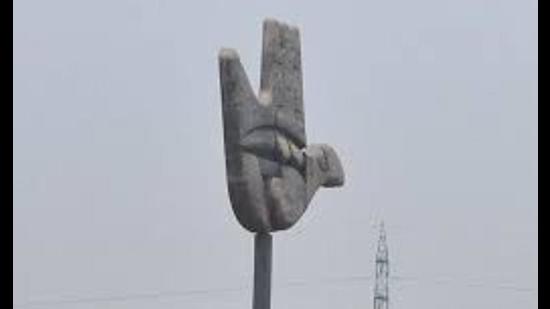Lal dora: UT admn to form policy on Punjab, Haryana pattern
After a Bangalore-based consultant, appointed to study and offer solutions to the problem, made a presentation on the issue, the administration directed it to examine how the neighbouring states had addressed the problem
Pursuing a comprehensive policy on the regularisation of construction outside the lal dora in Chandigarh villages, the UT administration will be formulating a policy on the pattern of models applicable in neighbouring states like Punjab and Haryana.

After a Bangalore-based consultant, appointed to study and offer solutions to the problem, made a presentation on the issue, the administration directed it to examine how the neighbouring states had addressed the problem. A lal dora (red line) separates village habitation from adjacent agricultural land.
A comprehensive policy is being examined in consultation with the Indian Institute of Human Settlements (IIHS), Bengaluru. A meeting of UT officials and IIHS representatives met here on Friday. The IIHS are expected to submit a draft policy on village development, regularisation of illegal structures and extension of lal dora.
“The consultants in our next meeting will be submitting a report incorporating the lessons learned from neighbouring states. We have asked them to study areas like Delhi, Panchkula and Mohali and make recommendations based on it,” said UT adviser Dharam Pal.
Notably, the administration is mulling extending the lal dora and regularising the constructions that have been undertaken outside the existing lal dora.
Policy in works
In January this year, the then UT administrator VP Singh Badnore had directed senior officials to work on regularisation of illegal constructions outside the lal dora. He had stated that since there was a lot of construction outside the lal dora area, the administration should formulate a scheme to regularise these.
Political parties and village residents had also been consistently asking for extension of lal dora and regularisation of constructions outside it.
The regularisation of illegal constructions in villages and lal dora extension has gained added importance this year as MC elections are slated in December. Recently, 13 villages were added to the MC. Now, votes from 26 villages will be a major component of total city votes. The issue is important in villages and will play a major role in elections.
Constructions galore outside lal dora
Architects and heritage conservationists are demanding that these illegal constructions should be removed to protect the city’s character.
The UT urban planning department, too, has consistently flagged the large-scale illegal construction and colonisation in villages of Chandigarh. It has repeatedly written to the MC commissioner, deputy commissioner-cum-estate officer and land acquisition officer (LAO) to take immediate action to stop illegal construction.
“Most city villages and semi-urban areas, including Kishangarh-Manimajra, Hallomajra, Maloya, areas around Bapu Dham near Sukhna Choe, Khuda Ali Sher, Kaimbwala, etc, have unauthorised constructions that have taken the form of colonies in recent months with the land mafia becoming active. Earlier most of these constructions involved renting out spaces, but sale of smaller plots has also come to light now,” said a senior UT official.
Unauthorised construction picked up pace after the city’s villages were transferred to the municipal corporation, said the official.
“One way of regularising these constructions is by extending the lal dora. But such constructions are in violation of the Punjab New Capital (Periphery) Control Act, 1952, which is applicable to areas outside a village’s inhabited area. Also, in some areas constructions have been done in violation of high court orders on protection of Sukhna catchment area.





